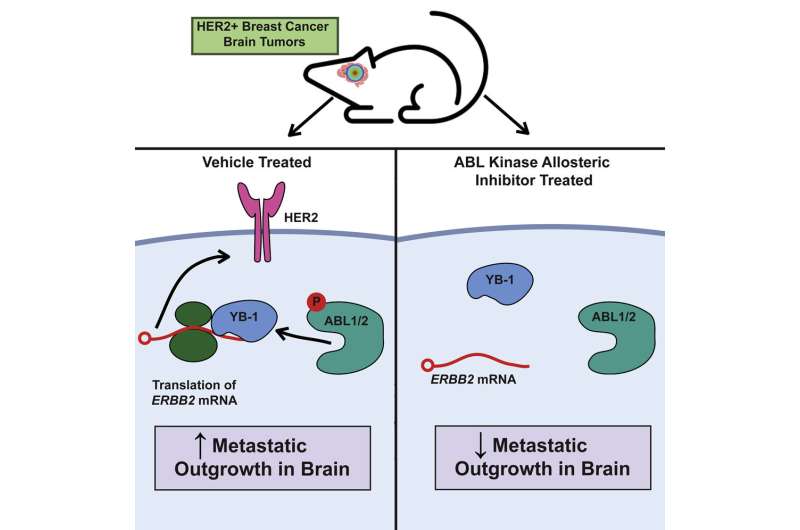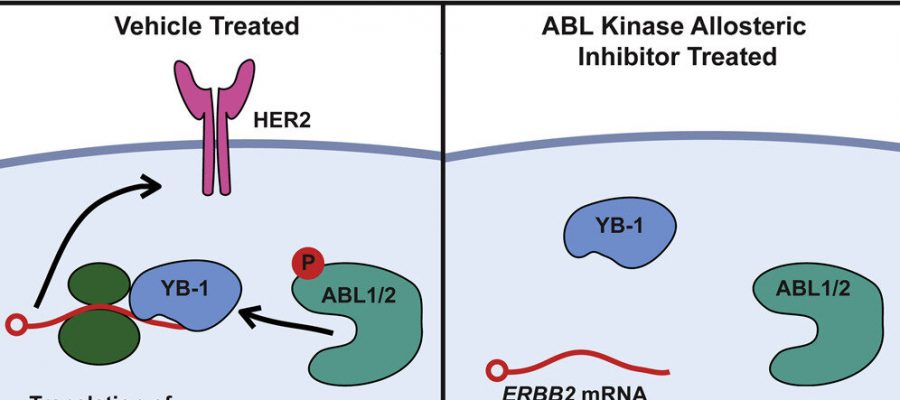
In animal studies led by researchers at Duke Cancer Institute, a drug approved to treat leukemia successfully disrupted the ability of HER2-positive breast cancer tumors from colonizing the brain.
The finding, appearing online Aug. 30 in the journal Cell Reports, provides evidence for human trials and suggests a potential new approach to derail one of the main ways that breast cancer turns deadly.
“We have made huge strides in treating HER2-positive breast cancers, but when tumors escape the therapies, they often metastasize to the brain,” said senior author Ann Marie Pendergast, Ph.D., professor and vice chair of the Department of Pharmacology and Cancer Biology at Duke University School of Medicine.
“When brain metastasis occurs, treatments are unsuccessful either because the tumors have developed resistance, or the therapies cannot penetrate the blood-brain barrier,” Pendergast said. “This remains a devastating diagnosis for patients.”
Pendergast and colleagues looked at how HER2 promotes breast cancer growth, particularly after becoming resistant to targeted treatments that have been highly successful in prolonging lives. The HER2 protein is a driving force in 30% of breast cancers, with approximately 45% of these leading to brain metastases.
The researchers focused on a pair of enzymes called ABL1 and ABL2 kinases that regulate the expression of HER2. The researchers found that these kinases play a critical role in creating the conditions that allow HER2 to accumulate on the surface of breast cancer cells, fueling breast cancer tumor metastasis.
Experimenting in mice, Pendergast and her team were able to disrupt the ABL kinases using a leukemia drug called asciminib. A kinase inhibitor, the drug is not impeded by the blood-brain barrier in tumor-bearing mice and interferes with the ABL kinases’ signaling mechanism.
By blocking the ABL signaling network, the therapy keeps the HER2 protein from accumulating in the breast cancer cells and shuts down their process for fueling the proliferation and spread of cancer cells.
Source: Read Full Article
